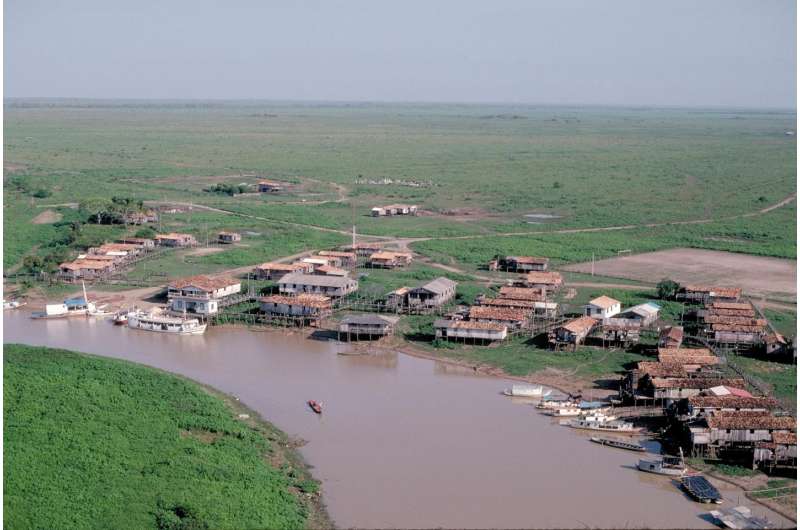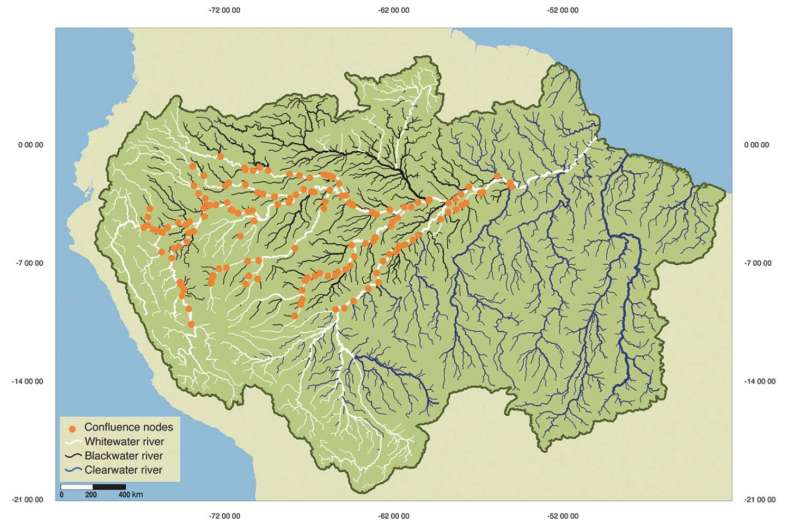Scientists produce a new roadmap for guiding development and conservation in the Amazon

Scientists from WCS (Wildlife Conservation Society), The Nature Conservancy, and several partners in Brazil and Peru have produced a geographic information system (GIS) "roadmap" to help guide conservation efforts at large scale in the Amazon River basin, a region roughly the size of the United States.
The new spatial framework—created with several major data sets and GIS technology—is made up of a new hydrological and river basin classification, along with various spatial analysis tools, that can be used to better understand and mitigate the synergistic effects of deforestation and new or planned highways and dams across the Amazon Basin.
The paper titled "An explicit GIS-based river basin framework for aquatic ecosystem conservation in the Amazon" appears in the most recent edition of the journal Earth System Science Data. The authors are: Eduardo Venticinque of Universidade Federal do Rio Grande do Norte; Bruce Forsberg of the Instituto Nacional de Pesquisas da Amazônia; Ronaldo B. Barthem of the Museu Paraense Emilio Goeldi; Paulo Petry of The Nature Conservancy; Laura Hess of the Earth Research Institute; Armando Mercado, Carlos Cañas, Mariana Montoya, Carlos Durigan, and Michael Goulding of WCS.
See the spatial framework database here, the paper here, and a one-pager on the tool here.
"The new spatial framework provides a dynamic way to map natural resources and possible infrastructure impacts on them at various scalable levels in the Amazon, one prime example being fisheries and fish migrations and the far-flung wetlands that support them," said Eduardo Venticinque of Universidade Federal do Rio Grande do Norte, the lead author of the study.

"This new tool will enable scientists and governments to monitor development initiatives across the Amazon basin and help guide policy to minimize the environmental impact of these activities," said WCS scientist Michael Goulding.
The Amazon is home to the most biodiverse rainforest on Earth, as well as the greatest freshwater system in the world. The region also supports what is likely the largest assemblage of wetlands in the world, a mosaic that ranges from seasonally flooded forests that cover most of the floodplains to immense savannas inundated for many months each year. The region is also considering a number of infrastructure development projects that could significantly impact the hydrology of the Amazon Basin and its fauna and flora. Conservation efforts typically focus on creating and strengthening protected areas and indigenous territories in the Amazon, with little focus on the aquatic systems. The new framework will help focus conservation and management efforts on waters and wetlands and the important resources they contain, including more than 2,400 species of fish, to promote a more integrated and large-scale approach to protecting the Amazon Basin.
In order to create a river basin classification system—one that could be used to serve the needs of conservation and monitoring—the scientists divided the river basin into a number of sub-basins defined by 11 different stream orders ranging from tiny streams to the Amazon River itself. Seven distinct levels of basins were defined, with the main Amazon Basin as Level 1, and larger tributary sub-basins such as the Ucayali and the Madeira as Level 2, and so on.
More information: Eduardo Venticinque et al, An explicit GIS-based river basin framework for aquatic ecosystem conservation in the Amazon, Earth System Science Data (2016). DOI: 10.5194/essd-8-651-2016
Provided by Wildlife Conservation Society




















